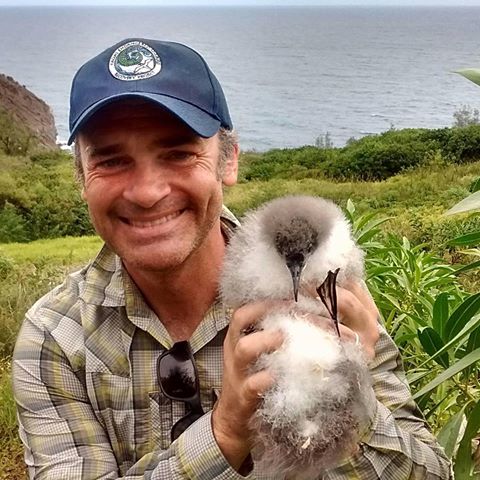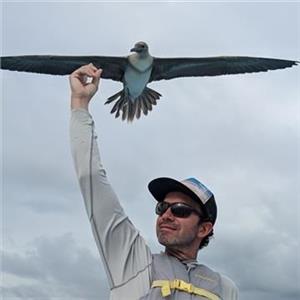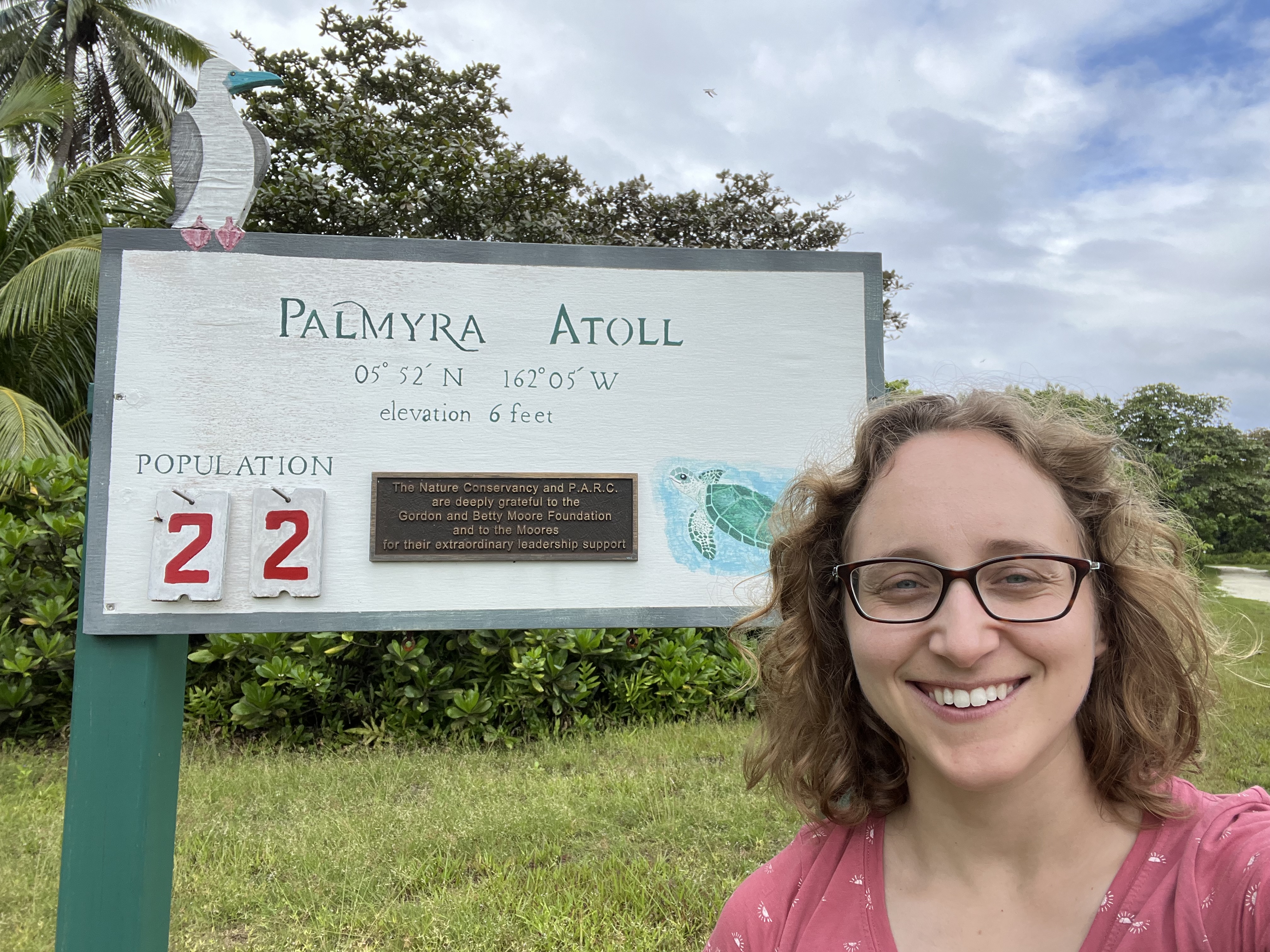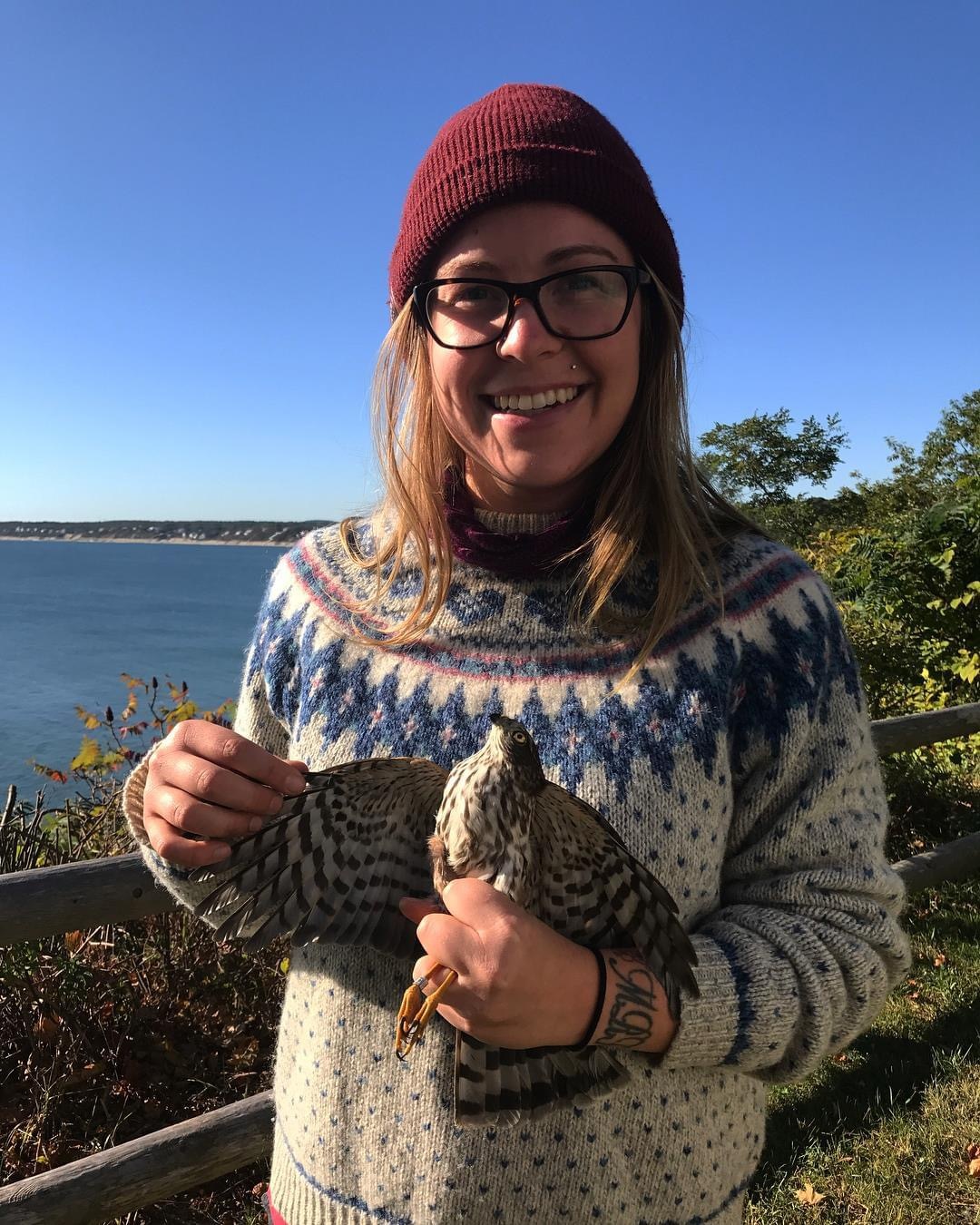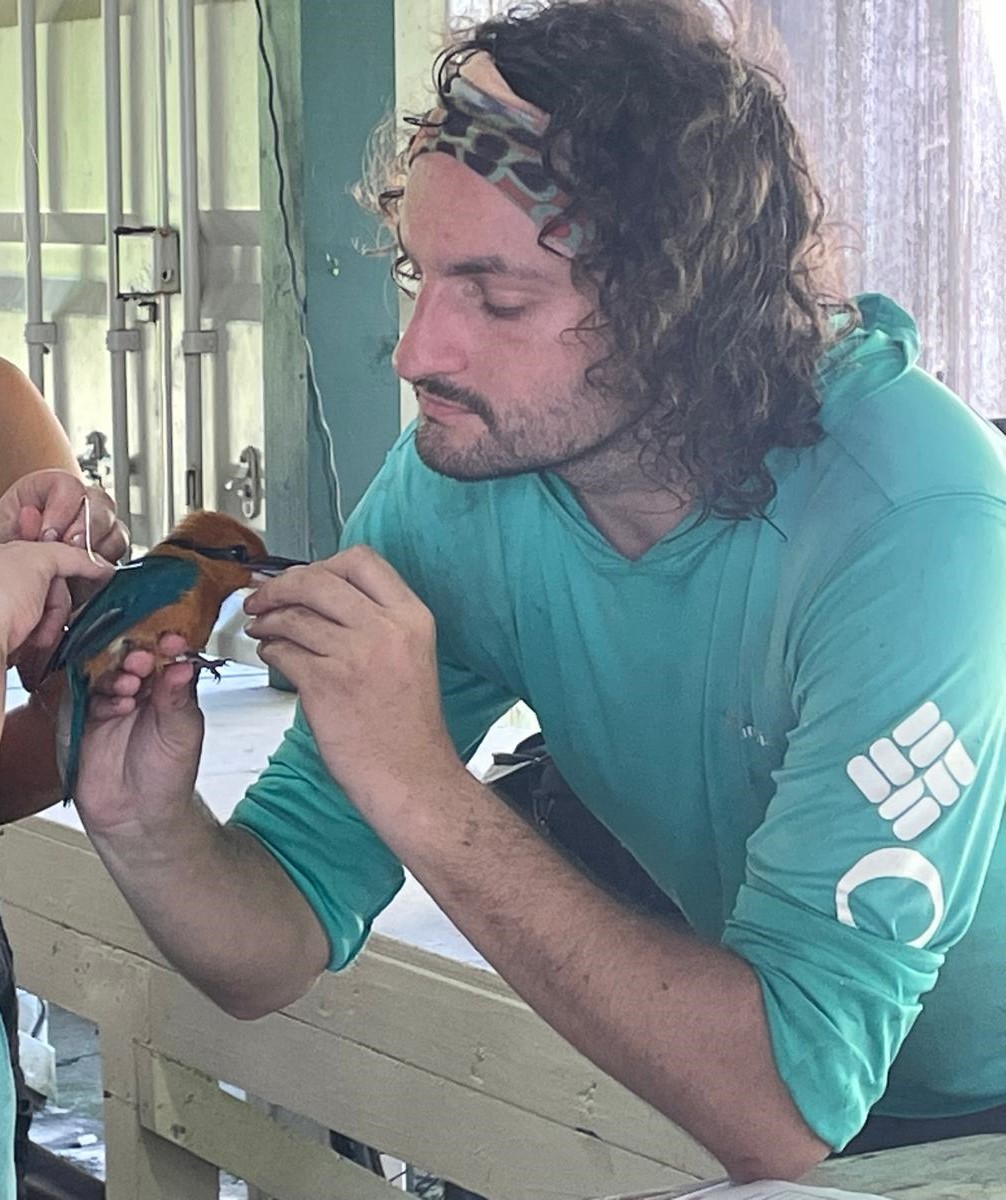The Path to Island Resilience
TNC’s Island Resilience team is front and center in the fight to protect biodiversity and build resilience to climate change on the world’s islands.
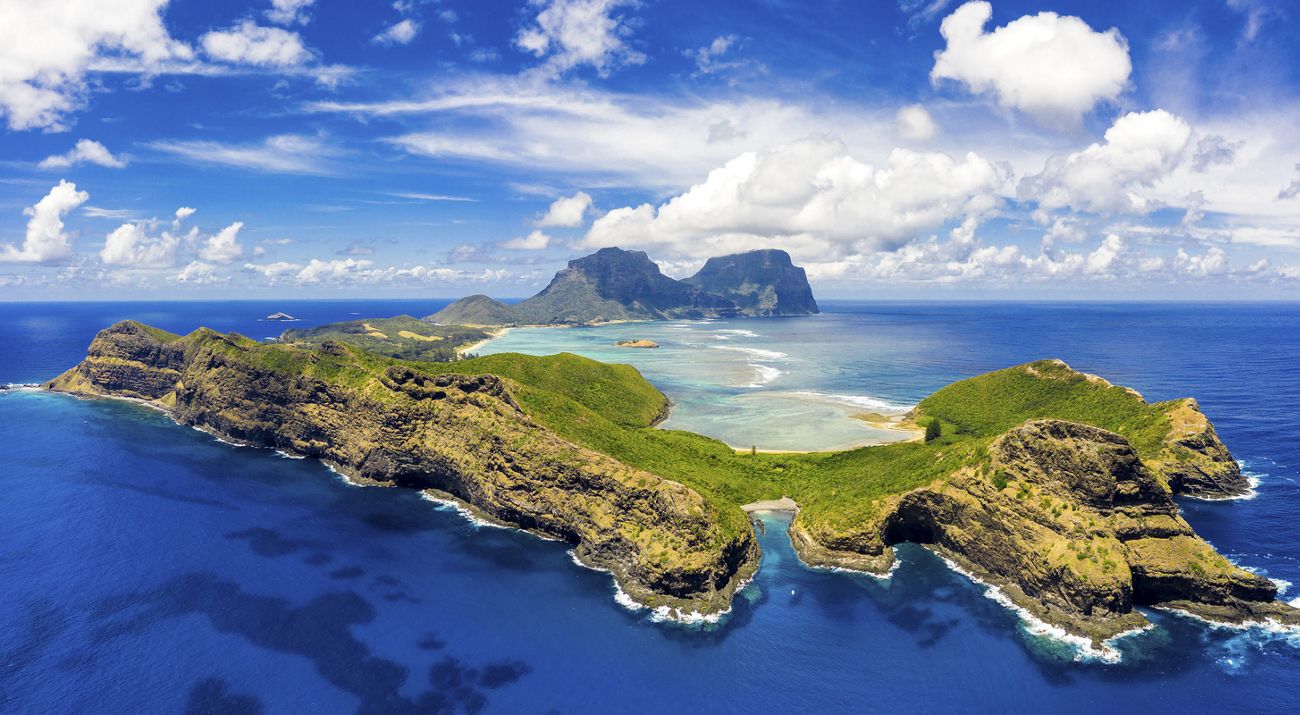
Islands have truly amazing evolutionary history. Because of their remoteness, the isolated development of species over time leads to an incredible diversity of flora and fauna, many of which are found only in one spot on our planet. However, that same isolation also makes many of these species highly vulnerable to impacts from invasive species and climate change. Today, 60% of extinctions occur on islands.
Yet there is hope. With today’s scientific understanding, technological tools and alignment of key partners and governments, The Nature Conservancy’s (TNC) Island Resilience Strategy believes there is an unprecedented opportunity for protecting islands.
Island Resilience in Action
Our team works with TNC island preserves and island-based programs across the Pacific to address priority conservation needs and identify opportunities for scaled solutions.
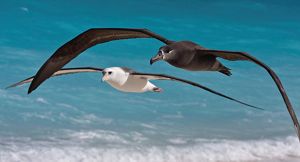

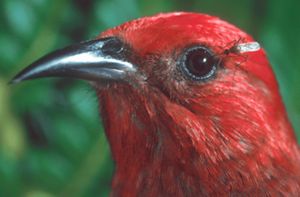

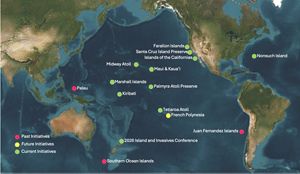

PLANNING FOR CLIMATE REFUGEES: Today's habitats may no longer be viable in the future, requiring new thinking and brave solutions to protect species. © Eric Vanderwerf

ISLANDS FOR SCALING: Our team works with TNC Island Preserves – like Palmyra Atoll here - to advance globally significant conservation initiatives and develop opportunities for scaling impact. © USGS

INVASIVES ARE A MAJOR THREAT: Our team has played a key role in the development and testing of novel mosquito suppression tools. © Jack Jeffrey

SEABIRD SOCIAL ATTRACTION: TNC is using seabird decoys, mirrors and sound systems that play recorded calls to attract species back to Palmyra Atoll. © SarahGlover/TNC

WHERE WE WORK: TNC’s work touches down on islands across California and the Pacific Ocean, and plans are underway to expand conservation to additional islands in the future. © Esri 2024
As a global organization with 70+ years in conservation, TNC is well-positioned to enable and scale solutions for islands given:
- Decades of experience in community-based conservation in the Pacific
- Recognized leadership in the island science and applied conservation fields
- A legacy of successful stewardship for TNC’s island preserves
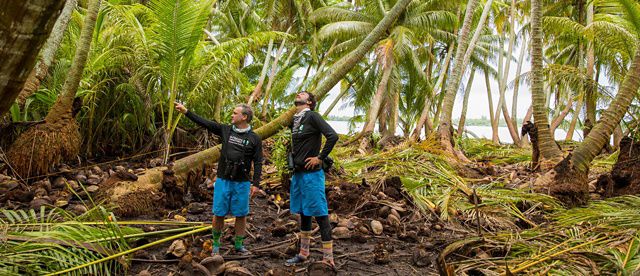
TNC’s Island Resilience strategy uses a proven approach including reducing the threat of invasive species, restoring priority habitats to benefit people and nature and recovering threatened and keystone species. We support high priority projects that can catalyze regional action and overcome barriers facing conservation impact by strengthening science, policy and partnership conditions to make large-scale success possible.
Thanks to our work, we have witnessed island ecosystems and endangered species make tremendous recoveries—and we believe these efforts can succeed around the globe.
Reducing the Foundational Threat of Invasive Species
Non-native, invasive species are one of the greatest threats to island ecosystems. Species like rats both out-compete and prey directly on native fauna, while others such as Argentine Ants, pigs, goats, deer and sheep can have devastating effects on native vegetation and animal communities. And when island flora and fauna struggle to survive—or go extinct—it can result in a cascade of negative effects, including further habitat and species loss.
That’s why reducing the threat of invasive species is key for island restoration. For many islands, it’s possible to eradicate harmful invasive species populations. This can allow nature to make incredible comebacks, which TNC has witnessed firsthand through efforts to remove pigs and sheep on Santa Cruz Island and invasive rats on Palmyra Atoll.
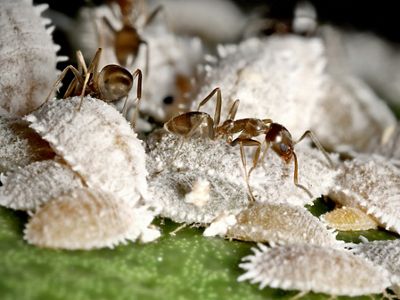
We work to strengthen high priority regional projects such as the Argentine Ant eradication effort on Santa Cruz Island.
Elsewhere, new tools are needed to reduce novel threats, such as our efforts to reduce mosquito populations and stop avian malaria in Hawaiʻi. Preventing new invasive species from arriving and establishing on islands—called island biosecurity—is also key. As we look to amplify each conservation success, we work with TNC teams to share our lessons learned with other conservation organizations and communities in the Pacific.
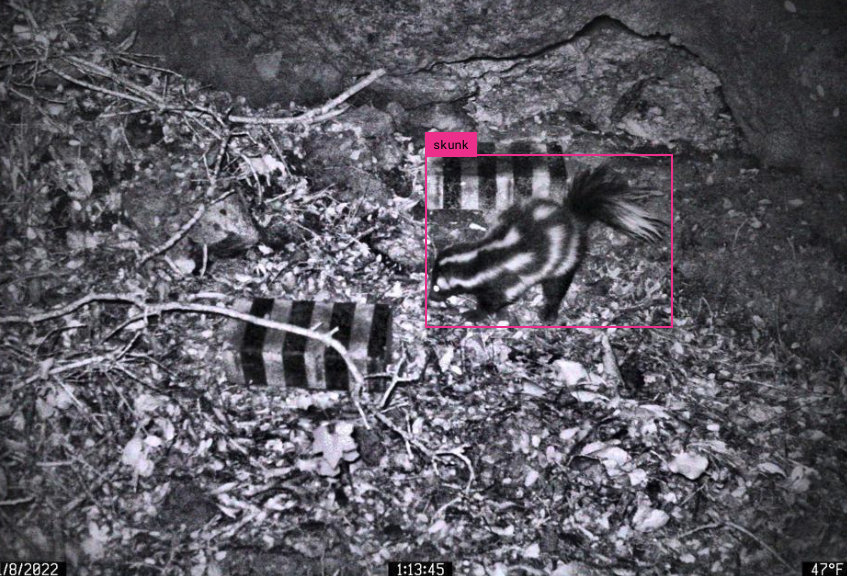
Case Study: What’s that Animl?
For those fortunate islands that don’t have invasive species, a key action is preventing them from being established once again. This is especially true for species like rats. They can easily become accidental hitchhikers on boats, and if they reach islands can very quickly breed up to harmful levels.
To help protect islands, the Island Resilience team saw an important opportunity for new tools to quickly detect any harmful, potential arrivals and alert managers so they can respond quickly. On Santa Cruz Island, TNC’s Conservation Technology team had identified a great way to leverage AI and wireless camera trap networks for just that purpose. Animl, a free, open-source, cloud-based software platform that connects to a wireless trap network, allows managers to quickly make sense of their camera trap data. What used to take months now takes mere minutes.
Animl works in three steps by:
- Organizing thousands of images collected by camera trap
- Applying machine learning to automatically identify what types of animals are in each image
- Notifying staff via email or text if a particular type of animal, such as an invasive rat, is seen.
We’re working together to scale up the use of Animl for early detection of harmful invaders on important islands around the world, from locations like Taiwan, Hawaiʻi and Bermuda. And Animl doesn’t stop at biosecurity. This system is now also being used to monitor rare skunks on the Channel Islands and wolves at our Independence Lake Preserve, and in a variety of research initiatives on and near TNC’s Jack and Laura Dangermond Preserve.
To learn more, visit animl.camera.
Restoring Habitat to Rebuild Resilience
Once freed from the harmful impacts of invasive species, many habitats show remarkable recovery on their own. Where this passive recovery is not enough to provide benefits to people and nature, a key step for priority habitats is active restoration. In the California Channel Islands, this might look like restoring oak woodlands, which provide food and shelter to thousands of other species. Across the Pacific, much of the Island Resilience team’s work occurs on atolls, where we are working with national governments and key conservation partners to evaluate and promote an expansion of nature-based solutions.
Born from the coral reefs that surround volcanoes, atolls are coral islands that remain after the volcano sinks back into the sea, leaving a central lagoon in its place. Atolls reflect highly intertwined ecological connections between dynamic islets, vibrant coral reefs and vast oceanscapes. These ecosystems are foundational to life in the Pacific, as focal points for globally significant diversity and species abundance that support the health and prosperity of millions of people.
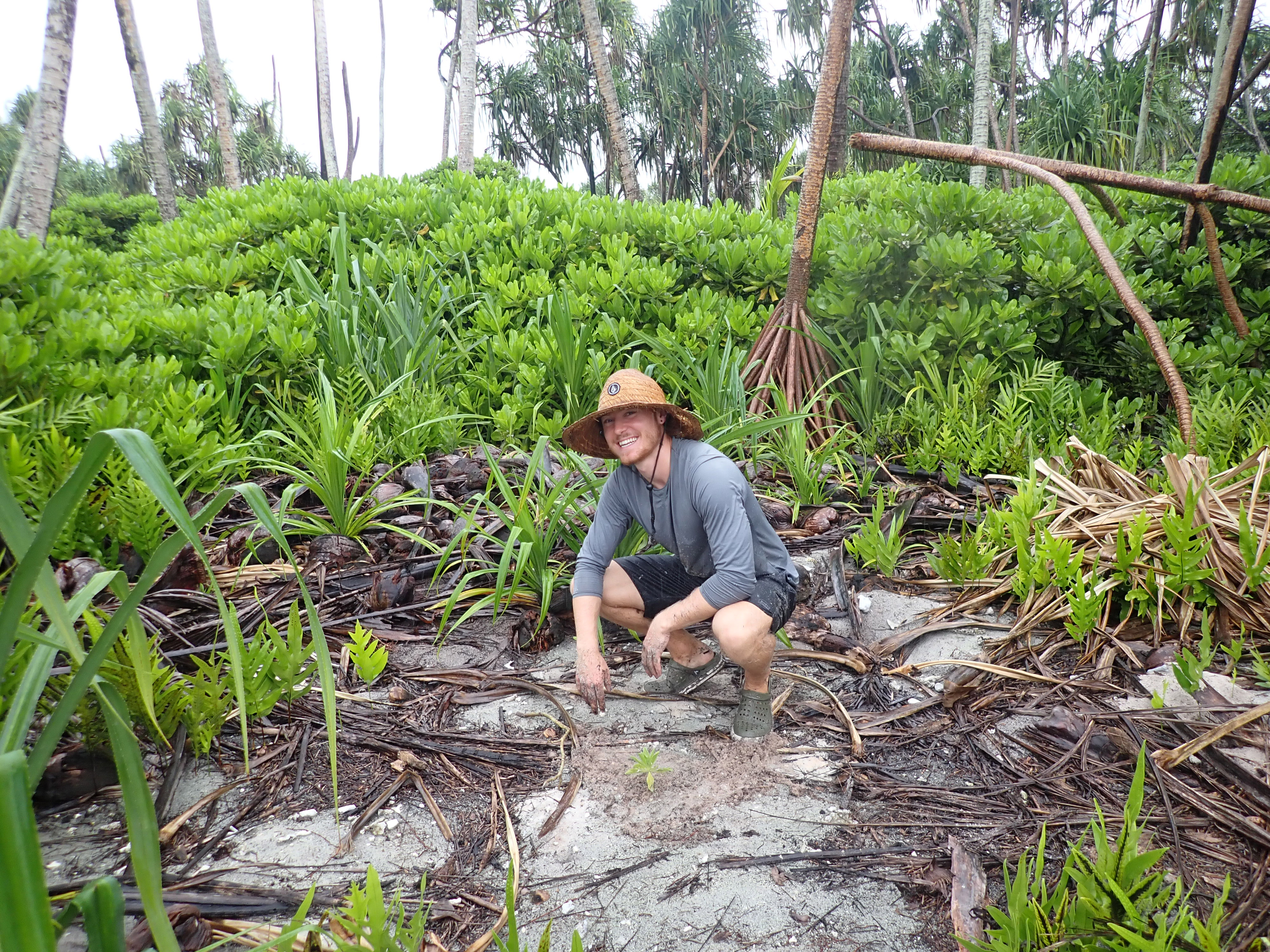
Case Study: A New Vision for Pacific Atoll Forests
Coconut palms are a foundational part of life across the Pacific. However, 200 years of planting coconut palms as an agricultural cash crop (called “copra”) by colonial interests transformed the palm from the revered “Tree of Life” to row-crop plantations that severely impact the natural functioning and resilience of atoll ecosystems. A first-of-its-kind study by TNC’s Island Resilience team and The University of California Santa Barbara shows that coconut plantations have led to deforestation on over 80% of Pacific atolls, with coconut palms now covering more than half of their forested areas. This has profoundly altered atoll island ecosystems and groundwater resources, potentially affecting atoll communities’ resilience to climate change and other environmental stressors.
Fortunately, coconut palm plantations have untapped potential for ecosystem restoration, resource conservation and climate resilience. The Island Resilience team is working with Pacific atoll communities and governments to visualize the state of their forests and evaluate their potential best uses, whether that’s copra production, native forest restoration or any path in between. It’s one example of the team’s work to identify and bolster financial mechanisms that can support nature-based solutions so communities can have both healthy ecosystems and secure livelihoods.
Ecosystem management projects, including the conversion of abandoned coconut plantations to native forests and the restoration of seabird colonies (most seabirds will not nest or roost in coconut palms), have shown great promise on atolls—and the Island Resilience team is helping to put that theory into practice at TNC’s Palmyra Atoll Preserve.
TNC and partners are working to restore native forests at Palmyra by converting introduced coconut palms to a rainforest dominated by native trees preferred by seabirds. These birds are important residents on the atoll, since their guano is a crucial nutrient source for the full atoll ecosystem. The restoration work aims to create more native habitat and encourage more seabirds to call Palmyra home, helping to bring back ecological balance to the atoll and increasing its resilience to climate-driven impacts.
Saving Wildlife to Save the Wild
From rare plants and wildlife that capture the imagination—like the Hawaiian honeycreepers, Laysan albatross and the Channel Islands tree poppy—a third pillar for island restoration and the Island Resilience team are actions for species. In many instances, these strategic actions are geared toward protecting keystone species, because when we successfully strengthen these populations, they increase the health and resilience of the whole ecosystem—like Island scrub-jays that move acorns and pine seeds across Santa Cruz Island or seabirds that feed only at sea and thus transport critical marine nutrients back to their to their tiny atolls. In other cases, these actions are to prevent extinctions—like the groundbreaking efforts to establish a wild population of sihek (Guam kingfisher) at Palmyra, where we have recognized an incredible opportunity to help transition a species off the IUCN’s Extinct-in-the-Wild list.
The Power of Keystone Species
Many of our recovery efforts focus on keystone species: wildlife that play critical roles within the ecosystem. From apex predators to critical pollinators, click on the photos to learn more about some of the important island residents we’re working to protect.


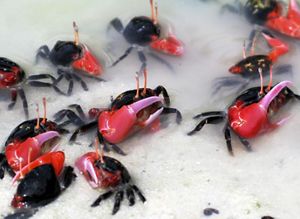
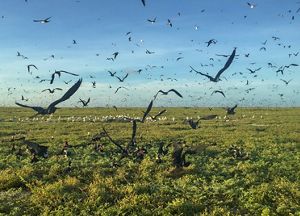

A SMALL BUT MIGHTY PREDATOR: As an apex predator on the island, the Santa Cruz Island Fox keeps other wildlife populations in check. © Ian Shive

AVIAN BASED FORESTRY: The Island Scrub-Jay–found only on Santa Cruz Island–plays a key role in the ecosystem by seeding acorns and pine seeds. © Morgan Heim/Day's Edge Productions

THE POWER OF CRABS: On tropical islands like atolls, an amazing diversity of crab species–like Fiddler crabs here on Palmyra—serve as key workers for the ecosystem. © TNC

MOVING NUTIRENTS : Seabirds only forage at sea. When they return to breeding islands, they transfer valuable nutrients to soils, forests and even coral reefs. © TNC
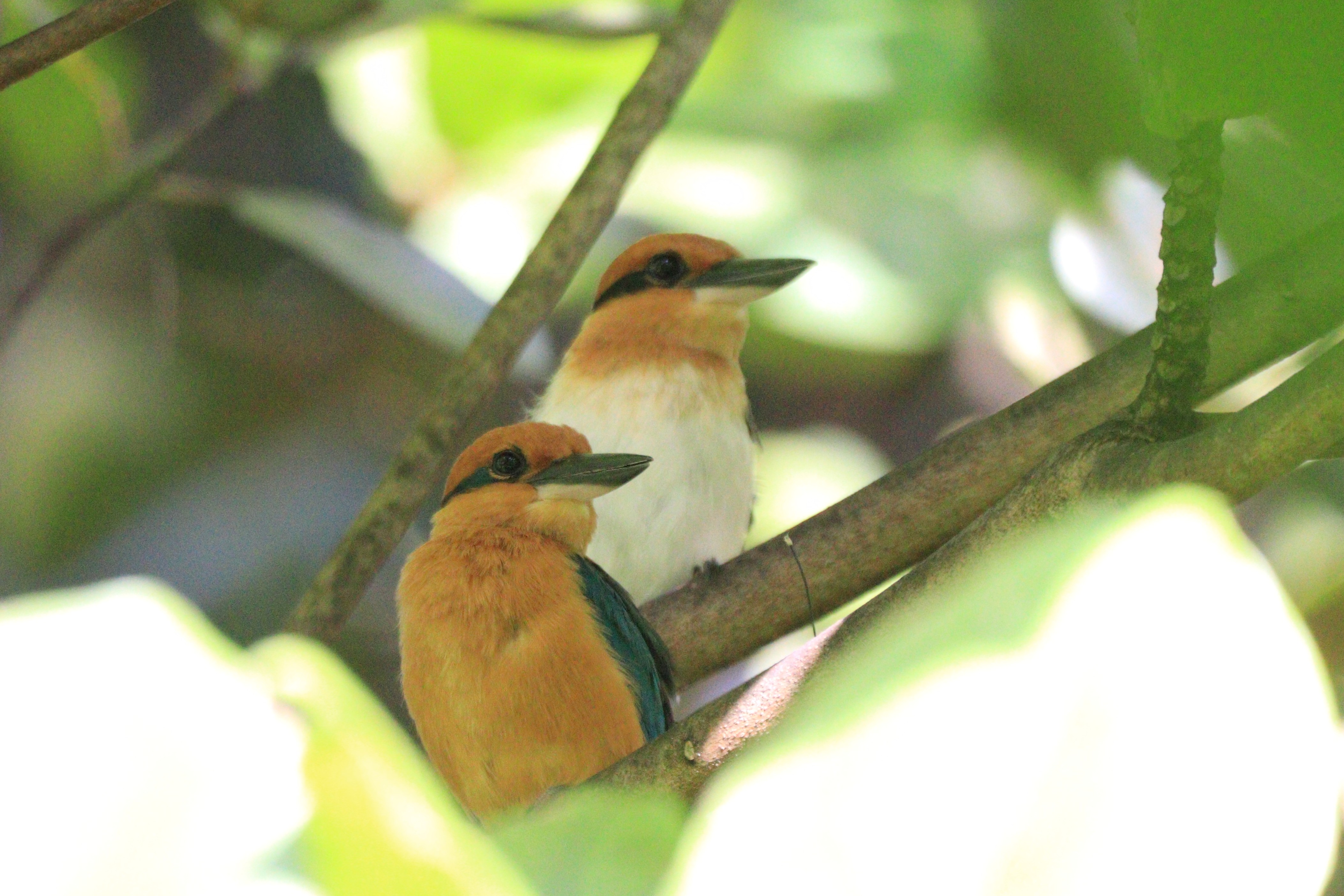
Case Study: Returning Sihek to the Wild
The forests in Guam went silent after the brown treesnake was accidentally introduced, decimating native bird populations by the 1980s. Fortunately, Guam biologists rescued 29 of the last wild sihek (Guam kingfishers) to bring them under human care in zoos, saving the species from extinction. But sihek are challenging to care for, and it became clear that the species needed to find a safe wild environment where they could survive.
TNC joined the Sihek Recovery Project in 2019, recognizing this rare and powerful opportunity to save the sihek from extinction by leveraging Palmyra Atoll as an ideal site for rewilding the species. In September 2024, nine young sihek became the first wild members of their species in nearly 40 years when they were released into the forest of TNC’s Palmyra Atoll Preserve.
The Island Resilience team, in collaboration with the Zoological Society of London (ZSL), manages the implementation of this novel attempt to establish sihek at Palmyra, providing a key steppingstone on the bird’s conservation journey back to its island home of Guam.
This project is the result of a global collaboration of many partners including Guam Department of Agriculture, Association of Zoos & Aquariums, U.S. Fish & Wildlife Service, TNC and ZSL.
Quote: Dr. Nick Holmes
Through our efforts, we can kickstart nature’s ability to take care of itself. Islands have nurtured some of the most rare and wonderful species on the planet, and we believe they can continue to support an amazing diversity of life for generations to come.


